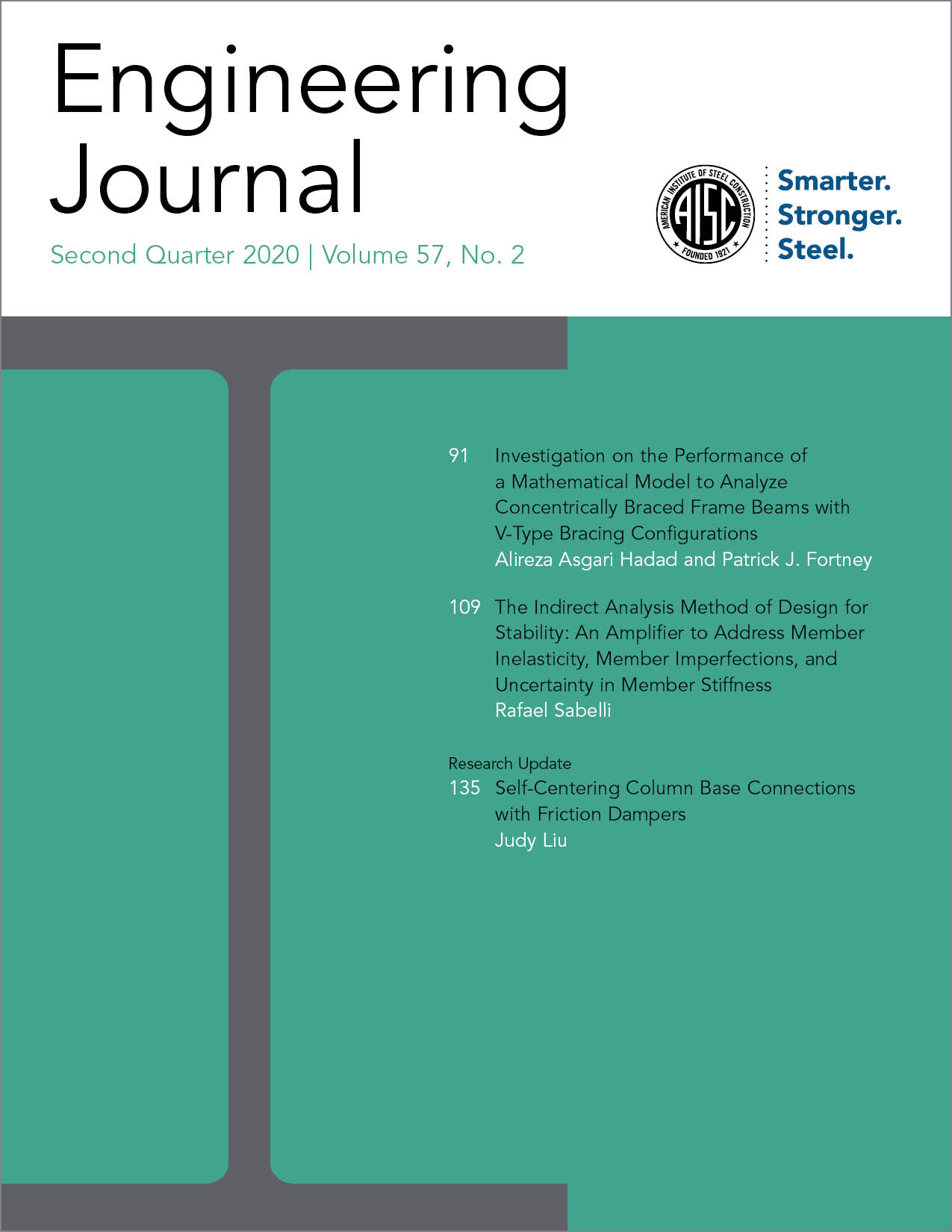Investigation on the Performance of a Mathematical Model to Analyze Concentrically Braced Frame Beams with V-Type Bracing Configurations
DOI:
https://doi.org/10.62913/engj.v57i2.1164Keywords:
beam, shear force, bending moment, concentrically braced frame, chevron, connection, stress distributionAbstract
The chevron effect and the corresponding mathematical model used to predict the beam shear force and bending moment demands on beams in concentrically braced frames with V- or inverted V-type (also known as chevrons) configurations is studied in this paper. The common analysis approach considers beam span, work point location, and a concentrated force representing the unbalanced vertical forces of the braces while ignoring any local effects resulting from the brace connection geometry. The assumptions and load distribution mechanisms in the connection region that have been discussed in earlier literature are presented, and the performance of the mathematical model based on chevron effect (CE method) is examined by comparing its results with the results of a net vertical force method (NVF) in addition to those obtained by finite element analysis. The analysis procedure recently proposed for beams in chevron concentrically braced frames is used to design the beams in a group of 20 beam-gusset assemblies. The results revealed the presence of the chevron effect in chevron beams. It also showed the CE method is able to estimate the beam maximum shear force and bending moment. Additionally, the stress distribution along the gusset-to-beam interface is studied.

